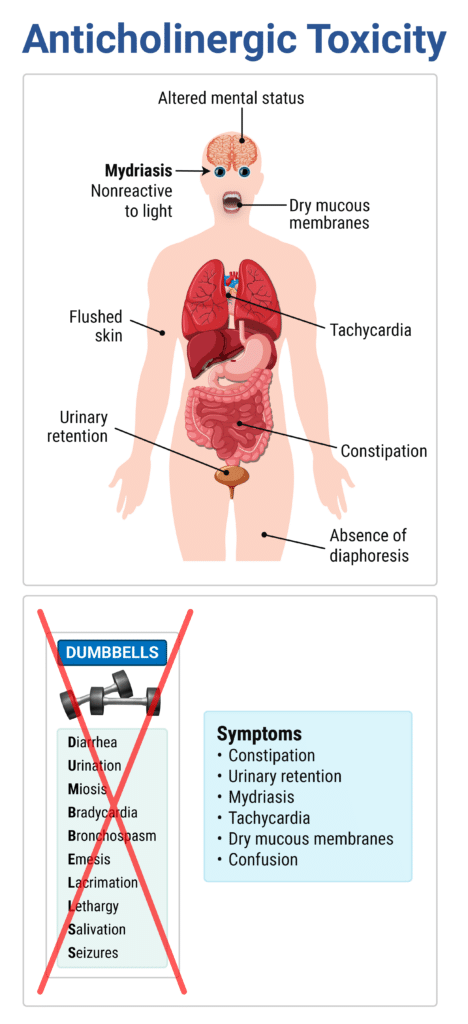Rapid Review: Anticholinergic Toxidrome

Reviewed February 2024

Anticholinergic Toxidrome
- PE will show hyperthermia, tachycardia, mydriasis, and dry skin
- Treatment is supportive care alone or in combination with antidotal therapy with physostigmine
- Classes of medications with anticholinergic properties include antihistamines, tricyclic antidepressants, and sleep aids
- Mnemonic: Mad as a hatter (AMS), blind as a bat (mydriasis), red as a beet (flushed skin), hot as a hare (anhidrosis), and dry as a bone (dehydration)
Sample question:
A 28-year-old man presents with his friends to the ED with altered mental status. The patient has no known medical or allergic history. His friends state that he was well until 1 hour ago. They have been camping, “living off the land,” and eating an assortment of berries and plants. His vital signs are remarkable for a temperature of 39°C, HR of 130 bpm, RR of 26/min, BP of 110/70 mm Hg, and SpO2 of 99% on room air. Physical examination reveals an agitated, altered man with 9 mm pupils that are nonreactive to light. His oral mucosa is dry, he feels warm to the touch, and his chest exam is remarkable for tachycardia and tachypnea. The axillary and inguinal folds are dry. No clonus or muscle rigidity is noted. What is the likely cause of the patient’s presentation?





Comments (0)